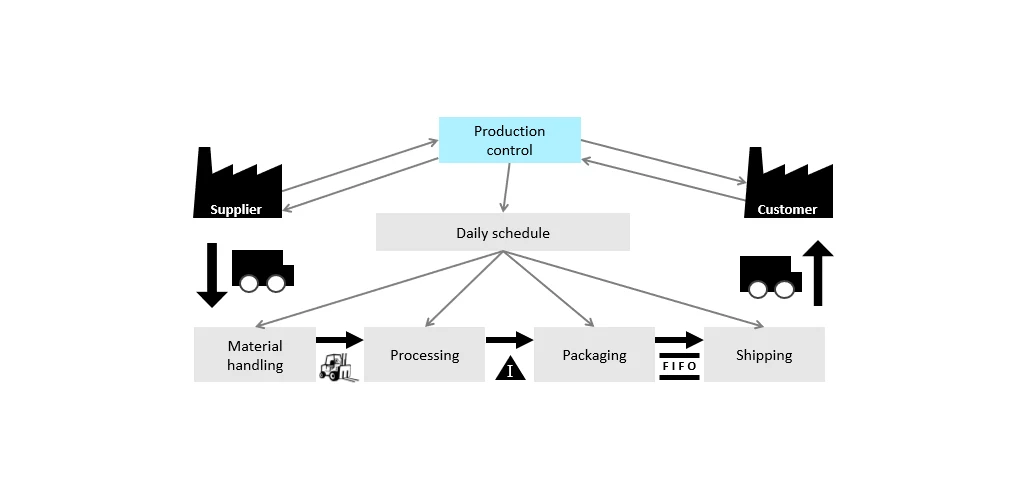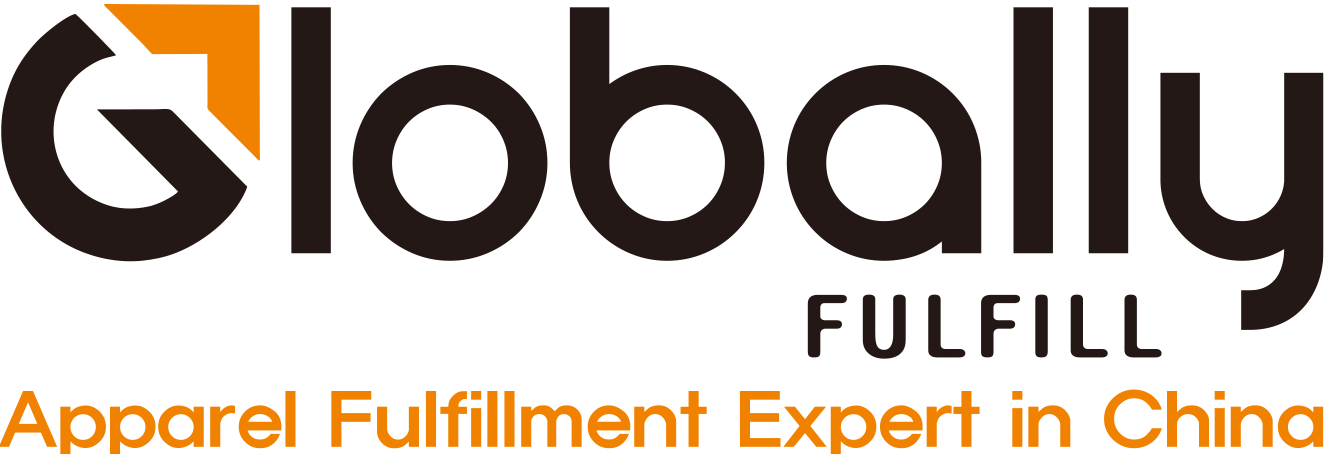Agility in supply chain management has to do with being responsive and flexible to new market demands. With the difficulties of managing a balanced and uninterrupted supply chain, it’s no wonder more and more companies are looking to adopt agile principles.
That’s why in today’s post, I’ll explain to you how the agile approach works, how it’s different from lean methodologies and how to apply it for your business. So without further ado, let’s begin.
What is an agile supply chain?
Agility, or being agile, refers to the ability to move quickly and readily. In this vein, an agile supply chain refers to one that can respond to changes in the market, customer demand and unexpected disruptions quickly and readily.
What is the difference between lean and agile supply chains?

A lean and agile supply chain are two different approaches to supply chain management. While both aim to improve responsiveness and efficiency, they differ in their focus and processes.
For one, agile supply chains focus on speed and adaptability to respond to new situations and get products to the market quickly. Whereas, lean supply chains focus on streamlining familiar processes with the aim of reducing costs and minimizing waste.
Due to its focus on adaptability, agile supply chains are more suitable for innovative industries with rapidly changing trends, such as fashion and technology.
For example, a cell phone manufacturer like Samsung naturally incorporates agility into its supply chain to make changes to their products based on what’s happening in the competitive landscape.
If a direct competitor like Apple releases a new and groundbreaking feature, and Samsung has the capacity to do so, they have to ideate and make changes to their offering to see if those new functionalities will resonate with their consumers and whether that new feature can gain them more market share.
Additionally, the agile supply chain approach works best for products with short life cycles and unpredictable demand, such as cell phones, which are typically upgraded every year or fashion products that go in and out of style in a matter of months.
On the other hand, lean supply chains are better suited to traditional industries and products that don’t require as much innovation, such as cardboard boxes, glass cups, screwdrivers, and can openers.
Because there’s not a lot of innovation, the focus is less on agility and responsiveness, but more on cutting costs and reducing waste as much as possible.
Lastly, in contrast to agile supply chains, we can also say lean principles work best for products with long life cycles and stable demand.
Now that we understand the difference between both approaches, let’s look at some key qualities that define an agile supply chain.
What key qualities define an agile supply chain?
Real-time data and supply chain visibility
To react to disruptions and demand changes on the fly, an agile supply chain must incorporate accurate and real-time data into its processes.
Only by combining data from all levels of operations with technologies such as inventory tracking systems, demand forecasting tools, and market analysis tools can your company detect and respond to possible hazards and changing circumstances like shortages, port congestion, supplier unavailability and others.
Hedging against disruptions
In the context of supply chains, disruptions refer to events that cause interruptions in the production, sale, or distribution of your products.
A major goal of an agile supply chain is the ability to respond to these new circumstances by employing risk management and building resilience through establishing a plan B, plan C, plan D, and so on.
While no supply chain is resistant to every challenge, you can protect yourself from common complications by:
- Partnering with backup suppliers to mitigate shortages and unavailability.
- Staying informed about geopolitical events to mitigate sourcing disruptions, such as the case of Russia vs. Ukraine.
- backup inventory for high performing SKUs to mitigate resource shortages.
- Using multiple shipping routes and carriers to mitigate port congestions and carrier unavailability.
- Cross-training warehouse workers to reduce the impact of labor shortages.
- Implementing demand forecasting tools to handle fluctuations in customer demand, among others.
Open Communication and Close Collaboration
For a supply chain to be truly agile, all stakeholders, including suppliers, carriers, and warehouse staff, must actively practice close collaboration by sharing information transparently among all supply chain participants.
This includes sharing real-time updates about inventory levels, demand forecasts, production schedules, unexpected events, and any challenges faced.
Advantages of Adopting an Agile Supply Chain

Better Customer Experience
One of the goals of agility in supply chain management is ensuring your business can keep its promises to customers, thereby increasing customer satisfaction.
As a result, an agile supply chain benefits customers both directly and indirectly. Customers rarely have to worry about stockouts or backorders because you’ve been monitoring inventory levels and adjusting them based on real-time demand forecasts.
Furthermore, they benefit from faster delivery times because a strong agile supply chain is effective at reducing the time between when a customer places their order and when it is delivered.
This is crucial, as 69% of customers say they feel less inclined to buy from a business if they fail to receive their package within two days of the promised delivery date.
Reduced Costs
While operating and overhead expenses are inevitable costs of running your business, incorporating agile principles into your supply chain can help you avoid unnecessary costs and boost profits in many ways.
For example, by adjusting your inventory levels based on real-time data, you can avoid carrying costs associated with overstocking.
By responding to market demand and phasing out certain products, you can avoid the costs of manufacturing and sourcing outdated or obsolete goods.
And, by identifying and responding to risks promptly, you can reduce the financial impact of disruptions like natural disasters, geopolitical conflicts, and shortages, in addition to avoiding the financial costs and customer loyalty costs of downtime.
Operational Efficiency
An agile supply chain boosts operational efficiency by allowing you to change your processes without causing disruptions to other parts of your operation.
Companies with an agile supply chain can alter production schedules and configurations swiftly to introduce new products, famously Zara is said to be capable of taking a new design from a Sketch to the runway in as little as 2 weeks.
Additionally, due to the heavy reliance on accurate and real-time data, an agile supply chain can make informed decisions to overall supply chain processes, such as inventory levels, demand forecasting, order fulfillment, and risk management.
Competitive Advantage
Lastly, an agile supply chain can give you a significant advantage over your competitors by allowing you to seize new opportunities and address challenges faster.
By having the flexibility to meet new customer preferences and market trends at short notice, your business is better able to win new customers, retain existing customers, and even attract your competitors’ most loyal customers.
Moreover, by reducing your time to market or being able to launch new products faster than competitors, you can capture more market share and stay ahead of your top competitors.
Tips for Creating an Agile Supply Chain

Set Objectives
First of all, determine the specific areas of supply chain agility you want to improve. For example, shortening the time it takes to process orders, reducing picker times, improving your customer satisfaction reports, being responsive to demand changes, etc.
Once you have identified what you want to improve, set goals that are Specific, Measurable, Attainable, Relevant, and Time-bound. For instance, your goal could be to reduce your order cycle time by 10% in the next 90 days or to improve your order accuracy rate by 20% in the next quarter.
Let Your Organization In on Your Goals
After setting a goal, make all relevant stakeholders, such as warehouse workers and process supervisors, aware of the goal and how they align with your greater objective of enhancing supply chain agility.
When everyone is aware of the big picture and how they can contribute, it becomes easier to work together towards the target.
Lastly establish Key Performance Indicators (KPIs) and tracking mechanisms to measure progress towards the goals you set.
This involves using metrics such as KPIs or warehouse analytics tools to measure your progress against previous benchmarks, such as order cycle times and picking times.
Review and Simplify Processes

Utilize a technique called value stream mapping to visualize the flow of materials and activities in your supply chain. Through this visualization, closely examine how processes flow into each other, such as order processing into picking and picking into packing and so on.
As you do this, keep an eye out for inefficiencies or bottlenecks that slow down your performance during each stage.
For instance, check if packing stations are too far from pick zones or if storage racks aren’t appropriately spaced, leading to longer lead times and a less agile supply chain.
Additionally, identify processes that can be automated, like the transmission of order details to pickers via mobile devices or the verification of picked items using simple barcode scanners.
By consistently improving your processes to meet best practices and optimizing based on feedback from your staff, you can find various ways to enhance your responsiveness to market demands.
Implement Technology
Evaluate your current technologies to identify areas you could improve by relying on automation. For example, as your operations grow, you’ll likely need to store inventory in multiple warehouses.
So instead of relying on human memory to track the details and location of SKUs, invest in an inventory management system that can guarantee the right product is received, stored, picked, packed, or restocked accurately and in the most efficient manner possible.
In addition, embrace cloud-based supply chain analytics tools that give predictive insights into customer demand, optimizing inventory levels, and mitigating risks.
Adopt a Demand-Informed Approach
Adopting a demand-informed or demand-driven approach simply means aligning your supply chain decisions with customer demand to enhance overall agility.
Start by implementing the supply chain analytics tools we just mentioned, then progress to monitoring data from your sales channels, social media, and customer surveys to gain insights into patterns in customer preferences and to anticipate shifts in the market.
Set SKU Reorder Points
Building off inventory forecasting, another strategy you have to apply is setting SKU reorder points. Put simply, this is a straightforward calculator of the typical number of SKU units you sell in a day multiplied by the typical production and/or fulfillment lead time.
So always remember this formula: average daily units sold x average lead time.
Build Resilience into Your Supply Chain
Build resilience into your supply chain by establishing a backup network of suppliers and logistics providers that can provide support and reduce the impact of disruptions. First of all, lessen your dependence on a single supplier by reaching out and occasionally ordering critical materials or components from other suppliers.
Furthermore, build strong relationships with different delivery carriers so your alternatives can step in during emergencies such as port congestion or traffic jams to deliver customer products without failing expectations.
Invest in Training Your Staff

Investing in employee training will increase your supply chain agility by empowering your workforce with necessary skills and knowledge to adapt to new organizational demands. To implement this, here’s a simple roadmap:
Identify Training Needs: Identify areas of your supply chain that require training, such as the different stages of order fulfillment, demand forecasting, data analytics, inventory management, and others.
Develop a Curriculum: Once you have a rough idea of what you want to train warehouse workers for, focus on developing a curriculum that includes both theory and practical application for the training to stick.
Consider Professional Training Services: On that matter, consider hiring professional training services and incorporating simulations, case studies, and real-world examples for a well-rounded training experience.
Regularly Assess Effectiveness: Lastly, regularly assess the effectiveness of training programs by comparing the impact of their training against their performance across a time period.
Final Thoughts
As we reach the end of today’s article, I hope I’ve been able to clarify what agile supply chain practices are, how they can benefit you and ways you can implement them.
Remember, the key to this management approach is incorporating data into every stage in order to make informed decisions, building resilience by finding backups and encouraging proactive communication between your supply chain partners.
With all that said, if you found value in this post, you’ll be pleased to discover the Globallyfulfill blog where we post new tips and tricks to ecommerce and order fulfillment every week.

















This website is phenomenal. The splendid content reveals the site owner’s passion. I’m awestruck and expect more such extraordinary posts.